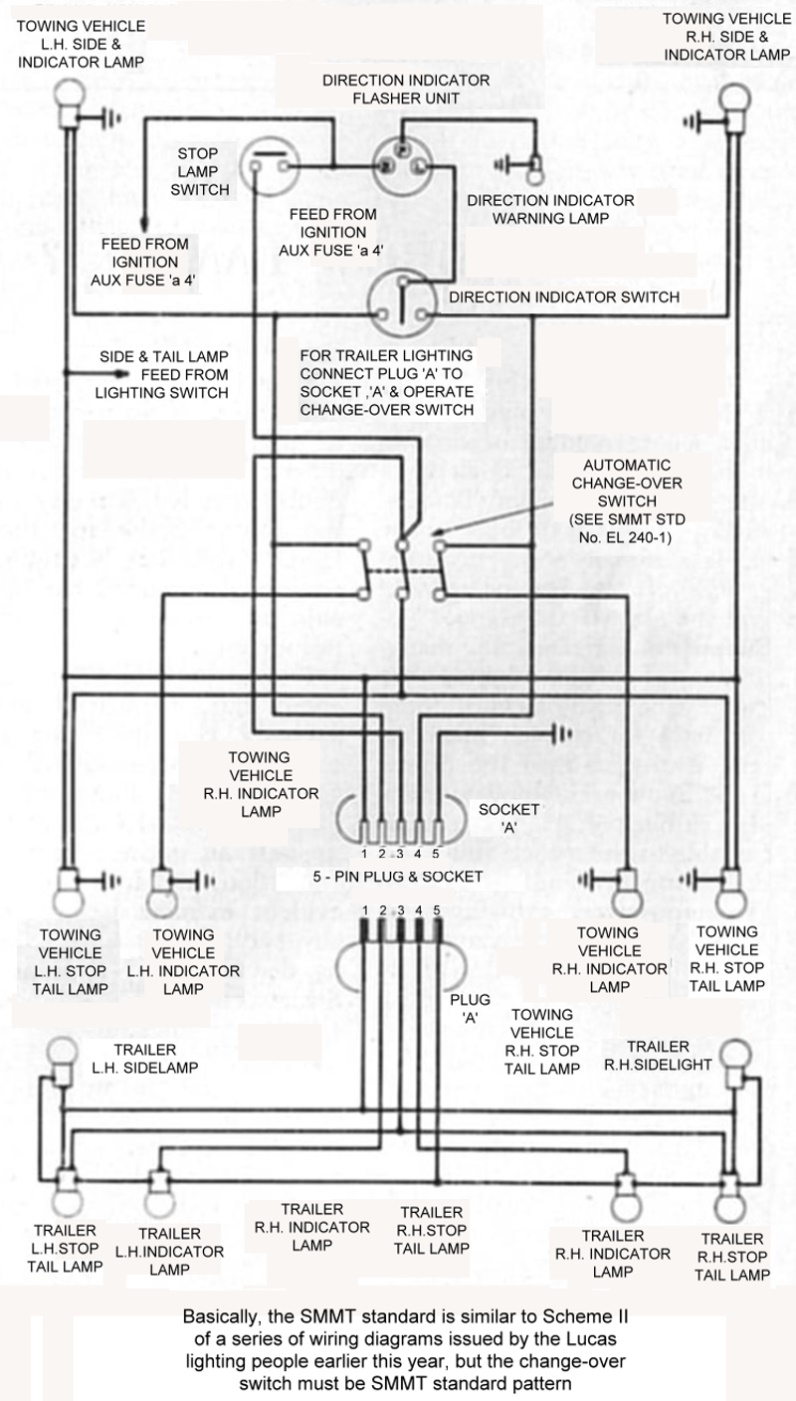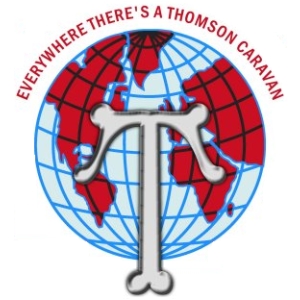|
| |
|
| Standard System for Caravan Lights - 1957
|
| HERE IS A STANDARD SYSTEM FOR CARAVAN LIGHTS |
Before stop lights and flashing indicators were thought of electrical connections between car and caravan were relatively simple, there being only two wires to a single rear light to worry about. Nowadays it is not unknown
for caravanner's to have as many as many as seven wires between the two halves of their outfit and as caravans are not normally provided with wiring diagrams, towing a strange van means tracing every wire before connections can be made.
Earlier this year, the Lucas lighting people worked out half a dozen schemes fur car-caravan connections; Scheme 2 used a manual change-over switch to cut out the rear, stop and flasher lights on the car when a van was being towed. Now the Society of Motor Manufacturers and Traders have issued their long awaited standard for car - caravan electrical wiring which is virtually the same as Lucas scheme 2 with the sole exception that instead of the manual change-over switch, an automatic switch conforming to another SMMT standard is employed.
This second standard, SMMT EL 240-1, lays down dimension and pin arrangement fur a five-pin plug connected to the caravan wiring. Pin arrangement is such that the plug will only go in in one position and can therefore be located "blind".
The standard is not concerned with the design of socket but only states that it shall receive the plug and that the plug must operate some kind of automatic switch to cut out the lamps at the rear of the car.
The standard does not lay down which lights are connected to the various pins, but this can be worked by cross-reference to the numbering on the Lucas or SMMT wiring diagrams. Thus, in practice, the key to the five-pin plug when used with this diagram is as follows: |
Pin 1: Blue: side and tail
Pin 2: Purple: left flasher
Pin 3: Yellow: stop light
Pin 4: White: right flasher
Pin 5: Brown: Earth
|
 |
|
Other provisions of the standard include placing the socket on the car as near the coupling as possible and provision of a dummy socket on the van to carry the plug when the caravan is off the mad.
|
| The Caravan - November 1957 |
 |
| Download in PDF Format |
|
|
|
|
|
|
|
| |
| |
 |
| |
Copyright © 1998 - 2015 Thomson T-Line History & Information |
|
| |
Disclaimer - The information provided on this Website site is offered with no warranty as to the authenticity, suitability or competence of the individual, company or service quoted here in. The Website shall not be liable for any damage or difficulty, direct or indirect, arising from utilization of the information contained within these pages. Thomson T-Line History & Information is not responsible for the content of external website's. |
|
| |



